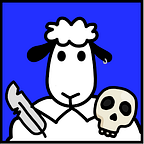CENNZnet -Gitcoin Hackathon Roundup
This September we were eagerly receiving submissions to our online hackathon. Hosted in partnership with Gitcoin, we received 65 high-quality submissions across all three challenges: the DApp competition, Browser Extension build and Generative art bounty.
Here’s a rundown of the hackathon challenges and a sum up of our prize-winning solutions!
The DApp competition
Potentially our most challenging bounty proposition was the open-ended NFT DApp competition. Entrants had to make use of the CENNZnet NFT module to create their own DApp and successfully deploy it onto the CENNZnet TestNet.
Our runaway winner for this hackathon was Akbaridria who in just 56 hours pulled together a fully functioning NFT marketplace DApp. You can use TRAPO to: buy, sell and mint NFTs, create collections and prove ownership using a system of QR codes. You can check out the finished DApp here: https://trapo.akbaridria.com/
Browser extension
The winner of our Browser Extension challenge was Leetdev, who rose to the challenge of improving our browser extension experience and diligently fulfilled the bounty requirements. Following Leetdev’s work, the CENNZnet browser extension can now:
- Display the balance of the accounts in the extension in both of the currencies used in CENNZnet: CENNZ and CPAY.
- Allow basic transfers from one account in the extension to any other account and display a success/failure message.
Generative art
By far the most popular of our hackathon challenges was the proposition to create awesome Generative art NFTs. For those who aren’t already passionate collectors, generative art uses programming to create controlled repetition in order to produce expansive pieces of unique art.
We had an overwhelming response from some very talented digital creators and developers. Our winners were:
Winner: CENNZnet people
Our overall winner was artist masket-bask who wowed our judges with their collection of meta-humans, each with distinct features and characteristics. All these meta-humans were created using tools such as Blender, Unreal Engine and python libraries to create generative figures.
Our judges were particularly impressed with the artistic direction of this project and the amount of detail put into each piece. The collection also has exciting scope to expand and become even more impressive, utilising random generation to vastly increase the number of iterations used. Awesome work!
Runnerup: Cities Circles and Cells
Cities, Circles, and Cells by omnianalytics found inspiration in an unusual place. The team were wowed by the breathtaking biological growth process of Physarum slime-mold. The growth process was originally codified as a generative art script by Antonio Sánchez Chinchón in his “Abstractions” R experiment. Omnianalytics took his exploration even further by performing a grid search across eight parameters controlling everything from the diffusion properties to the rotation angle of the agents.
After hours of graphical processing, the team were able to generate hundreds of slime-mold art abstractions and curated the collection of 99 representative pieces. These NFTs capture the essence of the generation process and highlight the variation in output of the final emergent patterns. The result is a truly beautiful celebration of nature at work — amazing!
Third place: Cryptospheres
The Cryptospheres collection, by artist andithemudkip, consists of 150 procedurally generated planets minted as NFTs.
These stunning images were generated by a script written in Javascript, and the main libraries used are node-canvas and Jimp for the actual image generation and tumult for the noise. The script works by producing a random name for each planet. This name is then as a seed for the actual planet generation. The resulting work is a haunting evocation of unexplored space and planets yet to be found.
Special mention: Crypto Roller Coaster Scream
Taking inspiration from Edvard Munch’s “The Scream” work, digital creator ivanmolto was looking for a way to allow people to go deep into their own crypto experiences. Ivanmolto wanted to create a work that allowed viewers to immerse themselves in some form of tension but also appreciate the humour and surreality of the piece.
The NFT piece uses a vertical gradient of green and red (trading colours) which is overshadowed by layers of brushes. The brushes are complex composite shapes based on a colours palette from “The Scream”. Naturally, our judges were super impressed with the creativity and story behind the work.
You can check out all our hackathon entries at the Gitcoin showcase on the 22nd of October. But don’t worry the fun isn’t over. If you have a killer blockchain idea, be it a world-changing NFT or a full-blown DApp, get in touch with the CENNZnet team and you may qualify for one of our grants. Learn more here.
